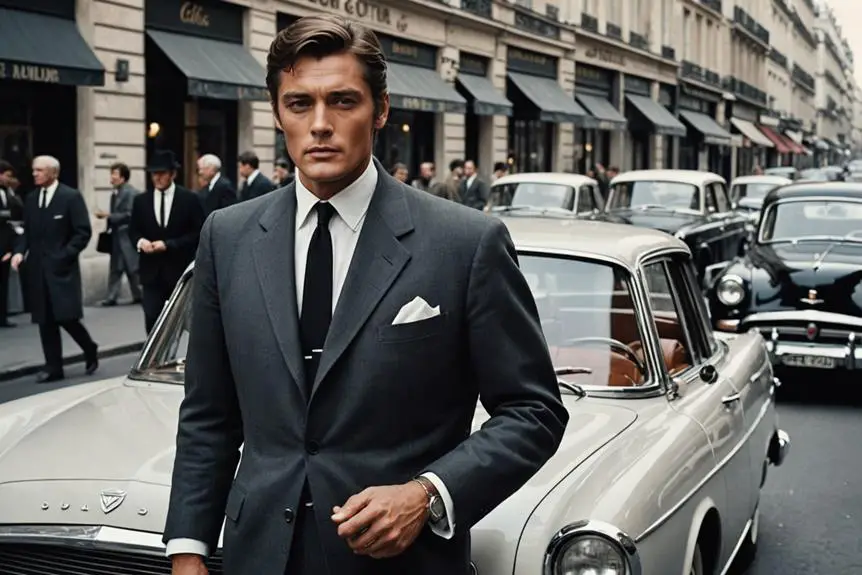As seasons change, expert stylists recommend rejuvenating your wardrobe using existing pieces instead of buying new clothes.
As the transition between seasons occurs, many individuals might feel the urge to refresh their wardrobes with new garments. However, expert stylists emphasize a more sustainable and cost-effective strategy: repurposing the clothing already owned.
In a recent discussion with The Guardian, several stylists offered insights on how to refresh one’s attire utilizing existing pieces. One foundational step involves performing a thorough audit of one’s wardrobe. “Too much choice is paralyzing,” stated Alexandra Fullerton, a stylist from Suffolk and author of “How to Dress.” She pointed out that most individuals only wear about 20% of their wardrobe 80% of the time, indicating a significant number of unused items. Many clothes can be too formal and impractical for everyday situations, according to Fullerton. She advocates reducing one’s collection to fewer, higher-quality pieces to streamline the decision-making process when getting dressed.
Styling experts also encourage decluttering by donating or selling unwanted clothes. Nick Hems, a Bath personal stylist and educator at the London College of Style, highlights that reducing wardrobe size alleviates decision fatigue and positively impacts mental health. “It is better for your mental health if you are looking at clothes that you like and wear,” he remarked.
As seasonal changes commence, the stylists recommend making an event out of swapping out seasonal attire. Fullerton advised using the occasion to reacquaint oneself with various garments, suggesting activities like mending and steaming clothes to breathe new life into them. “Out of sight is out of mind. When they are back in sight, you will realize that you don’t need more shorts because you’ve already got four pairs,” she noted.
When it comes to keeping or discarding items, Hems suggests retaining clothing for up to 18 months if it has not been worn, while Fullerton believes a one-year limit suffices. She references an innovative method for tracking clothing usage: by turning hangers in a specific direction upon wearing an item, it becomes easier to identify seldom-used pieces during seasonal evaluations.
Stylists recommend evaluating the items that provide joy and confidence, also referred to as “greatest hits.” Fullerton suggests that wearing items that prompt positive feelings can enhance one’s style. Mixing and matching existing garments can satisfy the desire for novelty without purchasing new items. Fullerton advises clients to explore unconventional combinations, such as pairing a flowery skirt with a jacket or layering a dress with a jumper.
Adding personality to a wardrobe filled predominantly with classic items is also a prominent suggestion. Cascarina, a Hertfordshire stylist, emphasizes the importance of including standout pieces alongside essential garments. Adding unexpected elements, like a jacket with distinct design features or bold accents, can modernize any outfit.
Iso Neville, a secondhand stylist based in South London, promotes the creative technique of pairing trendy items with inconspicuous footwear, such as a blazer worn over casual wear. “Adding in something that is a bit smarter or a bit more casual can really change the outfit,” she explained.
Stylists advise against feeling pressured to don a new outfit every day, emphasizing that finding joy in wearing favored items multiple times is perfectly acceptable. Fullerton remarked, “We should get joy out of wearing our favourite things.”
As trends evolve, incorporating elements of current fashion can be achieved using items already in one’s possession. According to Neville, menswear and tailoring plays a significant role in contemporary style and is easily adaptable with simple alterations to existing wardrobes.
The stylists collectively highlighted the impact of small adjustments, such as altering how clothes are worn or incorporating vibrant accessories, to create a fresh look. Simple actions, including rolling up sleeves or tucking in shirts, can transform an outfit into a styled ensemble.
The conversation also covered the significance of caring for one’s clothing properly to maintain quality over time. Fullerton advised washing garments according to their care instructions, pointing out that proper maintenance can significantly prolong a garment’s lifespan. She suggested strategies such as separating laundry colors to avoid mishaps and storing delicate items appropriately.
For those with lackluster creativity, seeking external opinions on outfits can illuminate new styling approaches. “Most people have great clothes that are perfectly wearable,” Fullerton stated, noting that another perspective can be incredibly helpful.
Even with clothing that may no longer fit, alterations can breathe new life into these items, allowing them to serve their purpose. Meanwhile, visible mending is gaining popularity, with Neville and others urging individuals to fix clothing, which can showcase personal style and creativity.
As the discussion wraps up, it is evident that securing sustainable fashion through a creative lens is possible. Whether through swapping, repairing, or simply reinventing existing garments, the guidelines set forth by these stylists offer numerous avenues to refresh one’s wardrobe without contributing to fast fashion waste.
Source: Noah Wire Services





Here, you can access a wide selection of slot machines from leading developers.
Players can experience retro-style games as well as feature-packed games with stunning graphics and bonus rounds.
Whether you’re a beginner or a casino enthusiast, there’s always a slot to match your mood.
casino slots
All slot machines are instantly accessible anytime and designed for laptops and mobile devices alike.
All games run in your browser, so you can get started without hassle.
The interface is easy to use, making it quick to find your favorite slot.
Join the fun, and discover the thrill of casino games!
?????????? ?????????? ?????? ????? ???????? ?? ????? — ??? ??????????? ???? ??? ??????????? ??????????.
????????? ???????????? ??????? ?? ??????? ? ?????? ?????????? ??????? ?? ????????.
?????, ?????????? ????? ???????? ?????? ?? ???????????.
????? ?????
???????????? ??????????? ?????????? ?? ??????? ????????? ??? ??????????? ???????.
??? ????????? ??????????? ??????? ????? ???????? ? ??????? ????????.
??????? ????????? ?? ???????
On this platform, you can access lots of online slots from leading developers.
Players can experience classic slots as well as modern video slots with stunning graphics and exciting features.
Whether you’re a beginner or a casino enthusiast, there’s something for everyone.
casino
All slot machines are instantly accessible round the clock and designed for desktop computers and mobile devices alike.
No download is required, so you can start playing instantly.
Site navigation is user-friendly, making it simple to explore new games.
Register now, and discover the world of online slots!
Questo sito offre il reclutamento di professionisti per lavori pericolosi.
Chi cerca aiuto possono ingaggiare candidati qualificati per lavori una tantum.
Ogni candidato vengono verificati con severi controlli.
sonsofanarchy-italia.com
Utilizzando il servizio è possibile leggere recensioni prima di assumere.
La professionalità continua a essere al centro del nostro servizio.
Iniziate la ricerca oggi stesso per portare a termine il vostro progetto!
1XBet represents a leading gambling platform.
Featuring an extensive selection of events, 1xBet meets the needs of millions around the world.
The 1xBet mobile app is designed for both Android and Apple devices users.
https://cour-interieure.fr/content/pgs/meghdunarodnaya_tema_v_hronikalyno_dokumentalynyh_lentah.html
You can download the application from the platform’s page as well as Google’s store for Android users.
For iOS users, this software can be installed via Apple’s store easily.
Within this platform, you can discover a wide range internet-based casino sites.
Whether you’re looking for classic games or modern slots, there’s something for every player.
All featured casinos fully reviewed to ensure security, allowing users to gamble securely.
vavada
Additionally, the platform provides special rewards and deals to welcome beginners as well as regulars.
With easy navigation, discovering a suitable site is quick and effortless, making it convenient.
Keep informed about the latest additions with frequent visits, since new casinos come on board often.
???????????? ????????? ??????? ??? ??????? ?????? ?????????? ??? ????? ???????????????.
??? ???????? ???????? ???????? ?????? ?? ?????? ??????????.
????? ??????? ???????? ??? ????????????.
??? ???????? ????? ???????????? ??????? ?????? ??????.
glaza boga.com
??? ????????? ??????? ????? ?????? ??????? ???????.
????????? ??????? ????? ???????? ??????? ??????.
????? ???? ?????? ???????????? ????? ????????????.
???????? ?????????? ?????????? ????? ?????????? ??????????? ? ?????????.